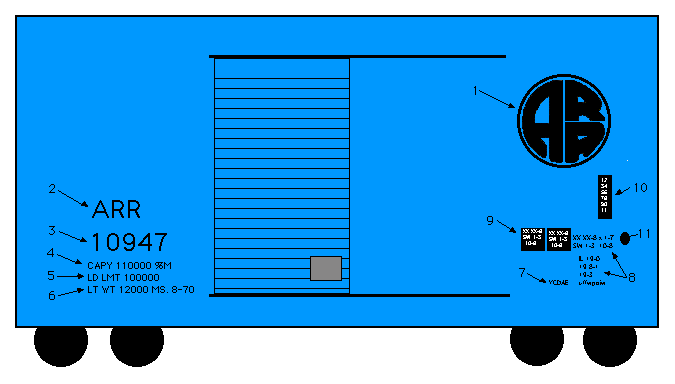

Information found on freight cars:1. Road name and herald
2. Reporting marks - Unique initials are assigned to railroads and private owners. Those initials ending in an "X" are non-railroad-owned cars.
3. Car number
4. Capacity - The car's designed capacity in pounds. This isn't required on cars built after 1985.
5. Load limit - The maximum weight for the load the railcar is carrying.
6. Light weight - The car's weight when empty. Cars are reweighed after repairs have been made and the new light weight is stenciled, along with the date and the shop initials where the work was done.
7. Built date - The date the car was built. This appears in the consolidated stencil on newer cars.
8. Dimensions - Lists the interior and exterior measurements of the car (cubic feet for boxcars and hoppers, gallons for tank cars and ice capacity for bunker reefers).
9. Consolidated stencils - These stencils were introduced in 1974. It is basically a shop log used to record dates and initials when routine brake and lubrication maintenace was performed. Cars may have one, two or even three of these.
10. ACI (Automatic Car Identification) plate - This colored panel is read by trackside scanners to read car information. The ACI system began in 1967 and all cars in interchange service were required to have plates by 1970. This requirement was dropped in 1977 due to problems (mainly grime).
11. Wheel inspection dot - In March of 1978, certain U-1 wheels were found to be defective. All cars with 33" wheels and weighing 70-ton or less capacity had to be inspected. If a car did not have U-1 wheels then it received a yellow dot. If a car did have U-1 wheels then it got a white dot and the wheels had to be replaced by December 1978.